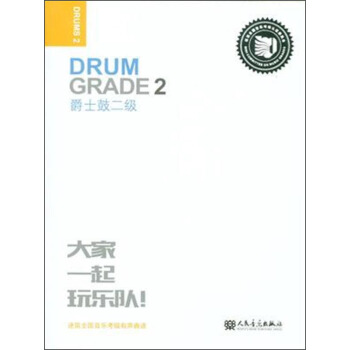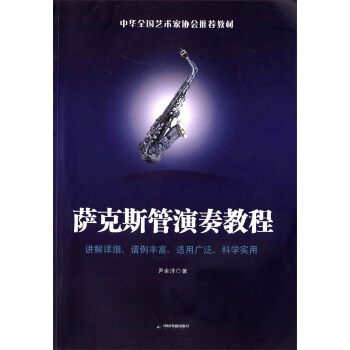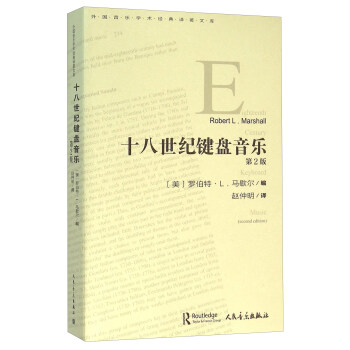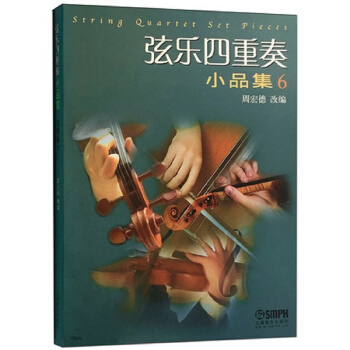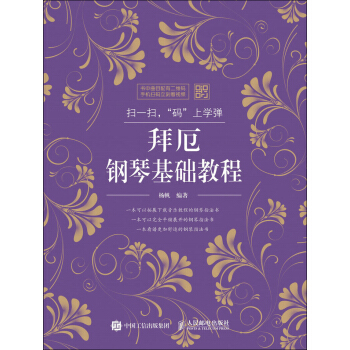![实用高级音乐英语选读 [Applied Advanced English Reading for Music]](https://pic.windowsfront.com/11798665/5666a00aN13c5d01c.jpg)

具体描述
内容简介
《实用高级音乐英语选读(英汉对照本)》作为复旦版《音乐英语》的后继进阶读本,主要是为音乐院系的硕博研究生而设计,也可作为一般音乐和翻译爱好者的读本与参考书。目录
Editor's Preface 编者的话Unit One
Concerts and Recordings: Programs and Profiles 音乐会节目单与CD介绍
1.Ralph Vaughan Williams: Orchestral Works
2.Britannia
3.Entente Cordiale
4.The University of Sydney: Sound of Bamboo
Unit Two
Books and Leaflets 音乐图书广告介绍
1.Nineteenth-Century American Musical Theater
2.Garland Encyclopedia of World Music
3.Music in the Plays of Shakespeare
4.Two Leaflets for Chinese Music
Unit Three
Abstracts for Academies and Symposiums 学术论文摘要
1.Western Composers and Compositions (I)
2.Western Composers and Compositions (II)
3.Chinese Traditional Music (I)
4.Chinese Traditional Music (II)
Unit Four
Prefaces and Introductions乐谱与图书序文/前言
1.Bernstein and the Piano
2.Britten's Three Orchestral Song-Cycles
3.Oedipus Rex and Symphony of Psalms
4.Pomp&Circumstance; No.6
Unit Five
Dictionaries and Encyclopedias 辞典与百科条目
1.Performing Practice
2.Piano Playing
3.History of European Art Music
4.China:A Musical Profile
Appendix
1.Keys to Chinese-English Translation 汉译英参考答案
2.音乐文献外译:语言学对策三议
精彩书摘
《实用高级音乐英语选读(英汉对照本)》:In 1939 Britten and tenor Peter Pears followed their friend, poet W. H. Auden, to America in hopes of avoiding the guns of impending war and finding a public less hostile to new voices in literature and music. Britten and Pears lived in various places in Canada and New York State, while endeavoring to establish American careers. A couple of months after their arrival, Britten wrote to his sister, "I might as well confess it now, that I am seriously consi-
dering staying over here permanently... I am certain that North America is the place of the future... there is terrific energy and vitality in the place. "
Eventually the picture began to look less rosy. With the outbreak of war, homesickness overcame them, and they returned to England in 1942. Among the works Britten completed during the American sojourn are An American Overture, the overture Canadian Carnival, the song cycle Les Illuminations, the left-hand piano concerto entitled Diversions, the children's opera Paul Bunyan ( with liberetto by Auden) , and the Sinfonia da Requiem.
Britten's antiwar position was well known and of long standing, and so his friends thought it odd that he would accept a commission in 1939 from the government of Japan( whose invading armies had already taken over Beijing and several other Chinese cities) for a short symphony or symphonic poem honoring the 2,600th anniversary of the ruling Japanese dynasty. He looked at it as an opportunity to earn a commission while expressing pacifist sentiments. Perhaps he thought the Japanese would not understand what the music was implying.He told a reporter that the Sinfonia da Requiem would be dedicated to the memory of his parents and would concern "my own anti-war conviction". He explained, "I don't believe you can express social or political or economic theories in music, but by coupling new music with well known musical phrases, I think it's possible to get over certain ideas. "
The commissioning committee was of course displeased with this strange work, naively critical of their country's actions and linked by its name and the titles of all its movements to Roman Catholic liturgy. Japan paid the agreed fee but never performed the Sinfonia da Requiem. The major works at the anniversary concert were Richard Strauss's Festmusik ( " Festival Music") and Jacques Ibert's Festive Overture. Britten, who thereby was probably saved a
good deal of public and official disfavor when Japan later went to war on the side of Germany, was philosophical about the cancellation: " After all, I have had the money and spent it...Anyhow, the publicity of having a work rejected by the Japanese Consulate for being Christian is a wow. " A premiere for the piece was soon arranged for Carnegie Hall.
The Sinfonia da Requiem, a work so "personal &intimate;" that Britten felt embarrassment when it was performed, is among his earliest and most successful compositions on a symphonic scale, potent evidence of his skill at integrating private convictions and public musical expression.
The opening movement is entitled " Lacrymosa" , named for the portion of the Requiem text whose words mean:"That day of weeping, on which guilty man shall arise from the ashes to be judged! " Pounding drums and writhing string melodies place us immediately within the hellish battlescape familiar from Britten's later War Requiem ( Telarc CD - 80157). Combining ominous menace with dread and sorrow, the music builds to a nightmarish climax that leads without pause to the next movement.
" Dies irae" is a symphonic scherzo whose name reminds us of the Requiem text:/'Day of wrath, that day the world shall dissolve into ashes. " The music is to be interpreted, according to biographer and musicologist Donald Mitchell, as "Britten's perception of the 6 Dance of Death' which was overtaking Europe and swallowing up the civilization he prized. " Some of the wind interjections suggest Morse code, and running trumpet figures hint at the out-of-control nature of events once the frenzy of war takes over.
With the finale, "Requiem Aeternam" , thoughts of "Eternal Rest" and peace at last find expression. In the wake of the fury and agitation of the preceding movements, the music takes on a sort of benumbed calm. Building and receding waves of sonority prefigure the luminous nature-painting of Britten's opera Peter Grimes, culminating in a radiant climax and a slow,elegiac diminishment to the end.
……
前言/序言
用户评价
我拿到这本书的时候,第一感觉就是它的版式设计非常考究,不是那种随随便便的排版。字体的大小、行距的设置,都显得很舒服,阅读起来不会有压迫感,这对于一本需要长时间阅读的书籍来说,是非常重要的。我一直对音乐的某个特定时期或者某个流派的英文研究资料很感兴趣,比如我想深入了解文艺复兴时期复调音乐的写作技法,或者解析浪漫主义时期作曲家如何运用和声来表达情感,这些都需要借助专业性的英文文献。这本书的标题,尤其是“高级”和“选读”这两个词,让我对它的内容有了很高的期待,我希望它能挑选一些真正有深度、有见解的文章,能够引领我进入到音乐研究的学术殿堂。我希望书中出现的语言风格能够是严谨而富有表现力的,既要准确地传达音乐理论和分析,又要能够通过文字唤起读者的想象力和情感共鸣。如果书中能包含一些对经典音乐作品的详细分析,从和声、旋律、曲式等多个维度进行深入解读,那将是我非常希望看到的内容。同时,我也期待书中能提供一些关于不同音乐文化之间的比较研究,或者对音乐技术发展对音乐创作和欣赏影响的探讨,这些都能极大地丰富我的音乐视野。
评分拿到这本书,首先映入眼帘的是其简洁却充满艺术感的封面设计,这种留白的处理方式,以及若隐若现的线条,都让我觉得它是一本沉淀着深刻思想的作品。我一直认为,音乐的美,不仅在于旋律的动人,更在于其背后所蕴含的文化、历史以及人类的情感。因此,我对于能够深入解读音乐的英文读物,有着非常高的期待。我希望这本书能够为我打开一扇窗,让我能够站在更高的学术层面,去审视音乐的发展脉络,去理解那些伟大的音乐家是如何用音符描绘世界的。例如,我想了解关于“音乐的本质”的哲学探讨,或者关于“声音的物理学”的科学解释,又或者是关于“不同文化背景下音乐的传播与演变”的社会学分析。这本书的“高级”和“选读”的定位,让我相信它不会是泛泛而谈的介绍,而是会精选那些真正具有代表性和启发性的文章,能够让我接触到音乐学领域最前沿的思考。我特别希望书中能够运用一些地道且精准的音乐术语,并且能够通过严谨的论证,让我对音乐的理解更加深入和透彻。如果书中还能包含一些对不同音乐流派之间关联性的分析,或者对音乐创作过程中创新与传承关系的探讨,那无疑会让我收获更多。
评分我一直觉得,学习任何一门语言,最终的目的都是为了更好地理解和表达更专业、更深刻的内容,而音乐这个领域,本身就充满了美学和文化的复杂性,所以一本优秀的音乐英语读物,对我来说,就像是打开了一扇通往更广阔音乐世界的大门。这本书的标题——“实用高级音乐英语选读”,让我对它的内容充满了好奇和憧憬。我期望它能挑选一些真正具有代表性、能够体现音乐学领域前沿思考和经典论述的文章,而不仅仅是泛泛而谈的科普。想象一下,阅读关于德彪西印象派音乐的深度解析,或者探讨爵士乐即兴创作的哲学内涵,又或者分析电子音乐在当代社会中的角色演变,这些内容光是想想就让人兴奋。我更看重的是,这些文章能否提供给我一些独特的视角,帮助我跳出原有的思维定式,用一种更专业、更学术的眼光去审视音乐。当然,语言本身也是非常重要的,我希望它能帮助我掌握那些在音乐理论、评论、史学等领域反复出现的专业词汇和表达方式,让我在阅读英文音乐文献时,能够更加自信和从容。如果书中还能提供一些原文的背景介绍,比如作者的学术立场、文章的出处等,那就更能帮助我理解文本的深度和价值了。
评分这本书的装帧设计倒是挺吸引人的,封面上那种水墨晕染的风格,若隐若现的音符元素,一下子就抓住了我的眼球。我一直对这类专业领域的阅读材料抱有很大的期待,希望能从中获得一些不同于普通英语读物的深度和广度。拿到手之后,迫不及待地翻看了一下目录,感觉主题划分得还挺细致的,从音乐史上的重要人物和事件,到各种音乐体裁的分析,再到音乐产业的最新动态,好像都涵盖了。我特别关注的几个部分,比如巴洛克时期音乐的演变,以及当代古典音乐的创新趋势,似乎都有涉猎。我期待书中能够提供一些地道的、专业的音乐学术表达,这对于我未来在学术交流或者撰写相关论文时会非常有帮助。同时,我也希望能通过阅读这些文章,拓展我对音乐文化更深层次的理解,不仅仅是理论上的,更是那种能触动灵魂的共鸣。当然,语言的难度也是我比较看重的一点,我希望它能达到“高级”的标准,能让我接触到一些更复杂的句式和词汇,但又不至于太过晦涩难懂,影响阅读的流畅性。如果能在每篇文章后附带一些专业术语的解释或者相关的背景知识拓展,那就更完美了。
评分这本书的封面给我一种宁静而又充满智慧的感觉,就像是在一个古老的音乐厅里,静静地聆听一段悠扬的旋律。我一直相信,学习一门外语,最终是要去理解和欣赏那个语言所承载的文化和思想,而音乐,作为一种普遍的艺术语言,更是如此。我特别希望这本书能够带领我走进英文世界中那些关于音乐的深刻探讨,比如,我想了解西方音乐评论家是如何评价那些划时代的音乐作品的,他们的语言体系和分析框架是怎样的?又或者,我想深入探究音乐治疗在心理学领域的研究进展,看看那些科学的论证是如何阐述音乐的治愈力量的。这本书的“高级”定位,让我相信它不会仅仅停留在简单的音乐知识介绍,而是会涉及更复杂的音乐理论、更前沿的音乐研究方法,以及那些在音乐界有着重要影响力的观点。我希望能够通过阅读,提升自己对音乐的理解深度,同时也能学习到更地道、更专业的英文表达方式,比如在撰写音乐评论或者学术论文时,能够运用得更加自如和精准。如果书中还能涉及到一些跨学科的音乐研究,例如音乐与数学、音乐与哲学、音乐与社会学的联系,那就更让我眼前一亮了。
相关图书
本站所有内容均为互联网搜索引擎提供的公开搜索信息,本站不存储任何数据与内容,任何内容与数据均与本站无关,如有需要请联系相关搜索引擎包括但不限于百度,google,bing,sogou 等
© 2025 book.coffeedeals.club All Rights Reserved. 静流书站 版权所有


